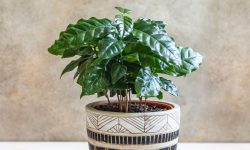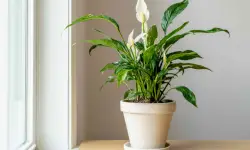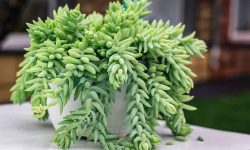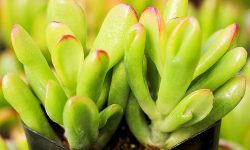I love growing Chinese evergreen houseplants due to their attractive foliage and ability to thrive in various indoor conditions. But you may notice the leaves of your Chinese Evergreen drooping at some point.
Chinese evergreen leaves drooping is an indicator of an underlying issue that needs immediate attention or the houseplant may die in the long run. This guide provides the causes, solutions, and preventive measures.
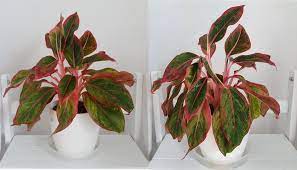
12 Causes of Chinese Evergreen Leaves Drooping
Natural Aging Leaves
One common cause of drooping leaves in Chinese Evergreens is natural leaf aging. As the plant matures, older leaves gradually lose vitality and start to droop. Regular pruning to remove older leaves will help redirect the plant’s energy toward producing new, healthy foliage.
Trim away older leaves regularly to maintain the plant’s aesthetic appeal and encourage new growth. Prune the Chinese Evergreen regularly to remove aging leaves and promote the development of fresh, vibrant foliage.
Overwatering
Overwatering is a common issue that can lead to drooping leaves in Chinese Evergreen. When the plant is consistently watered in excess, the roots become waterlogged, inhibiting their ability to absorb essential nutrients. This can result in drooping leaves and even root rot.
Allow the soil to dry out slightly between watering sessions. Insert your finger into the soil to a depth of about an inch; if it feels dry, it’s time to water. Ensure proper drainage by using a well-draining potting mix and emptying any excess water from the saucer.
Develop a watering routine based on the plant’s needs and environmental conditions. Water thoroughly but allow the soil to dry out between waterings to avoid overwatering.
Underwatering
On the other hand, underwatering can also cause Chinese Evergreen leaves to droop. Insufficient watering leads to dehydration and stress, affecting the plant’s overall health and causing its leaves to wilt.
Water the Chinese Evergreen thoroughly whenever the top inch of soil feels dry. Ensure that water reaches the entire root ball to promote healthy hydration.
Establish a consistent watering schedule to prevent underwatering. Monitor the soil moisture regularly and adjust your watering routine as needed.
Low Humidity
Chinese Evergreen prefers moderate to high humidity levels. When the air becomes excessively dry, particularly in heated indoor environments, the leaves can droop and develop brown tips.
Increase humidity around the plant by placing a tray filled with water near it or by using a room humidifier. Grouping plants can also create a microclimate with higher humidity.
Create a humid environment by misting the leaves occasionally or using a pebble tray filled with water to increase ambient moisture.
Temperature
Extreme temperature fluctuations can stress Chinese Evergreens, resulting in drooping leaves. Exposure to drafts or placing the plant near windows or heating vents can disrupt its optimal growth conditions.
Avoid placing the Chinese Evergreen in drafty areas or near temperature extremes. Maintain a stable temperature range of 60-75°F (15-24°C) for optimal growth.
Choose a suitable location for your plant, away from areas with significant temperature fluctuations, and provide a stable temperature within the recommended range.
Direct Light
While Chinese Evergreen can tolerate low to moderate light conditions, excessive direct sunlight can scorch its leaves, causing them to droop. Too much sun exposure can lead to leaf burn and overall stress for the plant.
Place the Chinese Evergreen in a well-lit area with indirect sunlight. Provide filtered light through sheer curtains or by placing the plant a few feet away from windows with intense sunlight.
Find a location with the right balance of light intensity and duration for your Chinese Evergreen. Observe the plant’s response and adjust its position accordingly.
Unfavorable Water Quality
Water quality can also impact the health of the Chinese Evergreen. If the water used for irrigation contains high levels of salts, minerals, or chemicals, it can accumulate in the soil, leading to drooping leaves.
Use filtered or distilled water to prevent the buildup of harmful substances in the soil. Alternatively, you can collect rainwater for watering purposes.
Avoid using water that may contain high levels of impurities or chemicals. Opt for purified water sources to maintain healthy soil conditions.
Overfertilization
Excessive fertilization can cause nutrient imbalances in Chinese Evergreen, leading to drooping leaves and other signs of stress. Applying too much fertilizer will overwhelm the plant’s root system.
Follow a regular fertilization schedule using a balanced, water-soluble fertilizer formulated for houseplants. Apply fertilizer at half the recommended strength to avoid overfertilization.
Read and follow the fertilizer manufacturer’s instructions carefully. Use fertilizers specifically designed for houseplants and apply them in moderation, according to the plant’s needs.
Nutritional Deficit
Insufficient nutrient supply in the soil can lead to nutrient deficiencies, resulting in drooping leaves and poor overall growth. Chinese Evergreen requires adequate nutrients to thrive.
Provide regular feedings with a balanced houseplant fertilizer, formulated with the necessary macro and micronutrients. Follow the instructions on the fertilizer packaging for application rates and frequency.
Develop a fertilization schedule suited to your Chinese Evergreen’s needs and growth rate. Monitor the plant’s response to ensure it receives sufficient nutrition.
Pest Infestation
Pests such as spider mites, mealybugs, and aphids can attack Chinese Evergreen, sucking the sap from leaves and causing them to droop. These pests weaken the plant’s vitality and overall health.
Regularly inspect the plant for signs of pest infestation, such as webs, sticky residue, or visible insects. Treat any infestations promptly using organic or chemical pest control methods, depending on your preference.
Maintain a clean and healthy environment for your Chinese Evergreen. Avoid introducing pests by inspecting new plants before bringing them indoors, and isolate any infested plants to prevent the spread of pests.
Plant Disease
Certain diseases can affect Chinese Evergreen, leading to drooping leaves. Root rot, caused by overwatering or poor drainage, and fungal infections are common problems that weaken the plant’s overall vigor.
Address underlying issues such as overwatering or poor drainage to prevent or treat root rot. For fungal infections, apply appropriate fungicides following the manufacturer’s instructions.
Maintain proper watering practices, ensure adequate air circulation around the plant, and avoid overcrowding to minimize the risk of diseases. Provide suitable growing conditions to promote a healthy plant environment.
Acclimation
If you recently acquired or relocated your Chinese Evergreen, it may experience acclimation stress, resulting in drooping leaves. Plants need time to adjust to changes in their environment, and temporary leaf drooping is a common response.
Provide consistent care, including appropriate watering, light exposure, and temperature conditions. Be patient, as the plant usually recovers once it adapts to its new surroundings.
Gradually introduce the plant to different conditions to minimize stress during acclimation. Make gradual adjustments to light levels, temperature, and humidity to help the Chinese Evergreen transition smoothly.
Final Thoughts From Experts
To prevent Chinese Evergreen leaves from drooping, it’s essential to maintain a balanced care routine tailored to the plant’s needs. Proper watering, humidity, light, and temperature conditions are crucial for its well-being. Regularly inspect your plant for signs of pests or diseases, and promptly address any issues that arise.
Remember, every plant is unique, and identifying the specific cause of drooping leaves may require careful observation and adjustments to the plant’s care regimen. If the issue persists or worsens despite your efforts, consider seeking advice from a local horticulturist or plant expert for personalized guidance.
With proper care and attention, your Chinese Evergreen will regain its vitality, and you can enjoy its lush beauty and vibrant foliage for many years to come.
People Who Read This Also Read:



